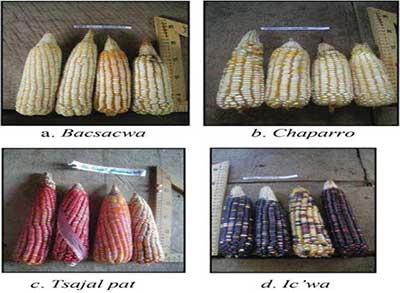Context-
Rahibai Popere's Padma Shri is a recognition of her work that has helped save hundreds of landraces (wild varieties of commonly grown crops) at the village level. She is popularly known as Seedmother, from Akole taluka of Ahmednagar, Maharashtra.
Explaining Landraces-
- Landraces refer to naturally occurring variants of commonly cultivated crops. These are just opposite of commercially grown crops, which are developed by selective breeding (hybrids) or through genetic engineering to express a certain trait over others.
- Landraces are a complex and genetically diverse population tolerant to stress.
- A landrace represents the equilibrium between heterogeneous and heterozygous genotypes within a population of a crop that is maintained by continuous multiplication under a given set of climatic, soil and husbandry conditions.
- Naturally occurring landraces have a large collection of untapped genetic material, which can provide solutions.
- Genetic diversity is nature’s survival mechanism. The wider the gene pool, the more the chance of developing a trait that can help in surviving extreme climate events.
- Merit- Landraces provide traits for more efficient nutrient uptake and utilization, as well as useful genes for adaptation to stressful environments such as water stress, salinity, and high temperatures for development of improved cultivars.
- Crop Selection and hybrid breeding over several decades has narrowed the genetic base of most crops.
- Example- Kalbhat, a unique landrace of scented rice. Over the years,
this variant had just vanished from cultivators’ fields as hybrid variants
became famous and prominent.
It has better climate resilience than popularly grown rice and can tolerate flood or drought better.
Types of Landraces-
- Primary Landrace- crop that has developed its unique characteristics through repeated in situ selection and that has never been subjected to formal plant breeding.
- Secondary Landrace- crop that has been developed in the formal plant breeding sector but which is now maintained through repeated in situ selection and seed saving, which is likely to be genetically distinct from the original bred material.
Need to protect Landraces-
- With proper agricultural practices, landraces can give better yield with lower input costs.
- The main factors that contribute to the genetic erosion of LR diversity include: changes in agricultural practices and land use, use of pesticides and insecticides, replacement of traditional varieties with modern, uniform cultivars which lead to a genetic bottleneck.
Landrace on farm conservation-
Landrace on-farm conservation is an active management of LR diversity within the traditional agricultural systems where they have developed their unique characteristics.
Sources-
- The Indian express
- Sciencedirect
- FAO









